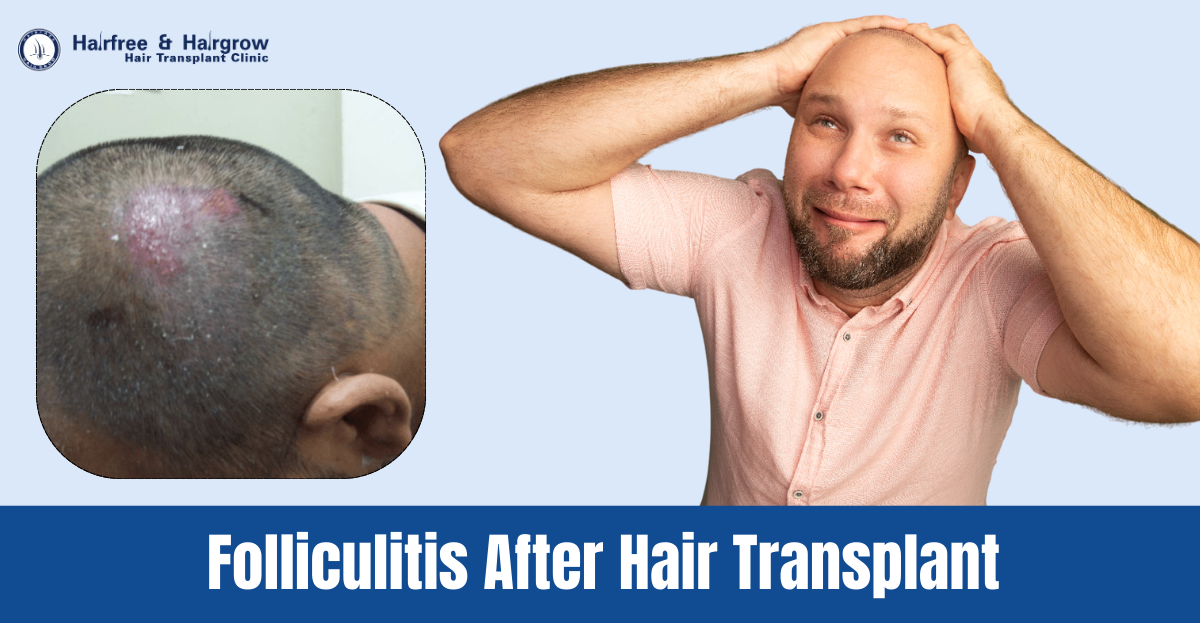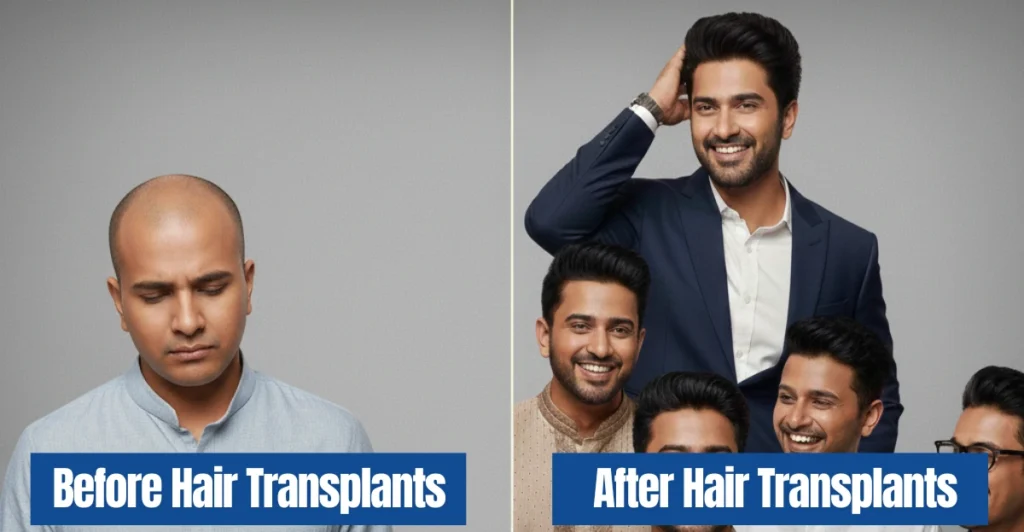Getting a hair transplant is an exciting step for those seeking to restore hair growth. However, there are some post-transplant scalp issues to watch out for, one of the most common being folliculitis after hair transplant.
Folliculitis is an infection of hair follicles that can happen at any time—before, during, or after a transplant.
In this guide, we’ll explore why folliculitis occurs after a hair transplant, recognize its symptoms, and discuss treatment and preventive measures for a smooth recovery.
Table of Contents
Causes of Folliculitis After a Hair Transplant
Folliculitis after a hair transplant can be caused by several factors, including bacteria, fungi, and even non-infectious (sterile) causes. Here are some common reasons why it may occur:
Bacterial Infection
The most common cause is when bacteria invade hair follicles and trigger infection. This is often associated with inadequate scalp hygiene post-surgery.
Fungal Infection
Fungi, though less common, can also infect hair follicles, especially if scalp hygiene isn’t maintained properly.
Sterile Folliculitis
This type doesn’t stem from bacteria or fungi but can arise from irritation, skin reactions, or other external factors.
Folliculitis can affect both transplanted and existing hair, and it can occur in the donor or recipient areas.

Symptoms and Early Signs of Folliculitis
Recognizing early symptoms can make a significant difference in treatment. Folliculitis generally appears as:
- Red bumps or pustules around hair follicles.
- Swelling and mild redness in affected areas.
- Pus formation and itching, can spread if left untreated.
In severe cases, symptoms may expand to include fever, headache, or pain in other areas, such as nearby lymph nodes, a condition known as lymphadenopathy. Fortunately, severe folliculitis occurs in less than 5% of cases.
How I Cured My Scalp Folliculitis
Managing folliculitis starts with maintaining good hygiene and following your doctor’s post-surgery care instructions. Here’s a practical guide that worked for me:
- Strict Hygiene Routine: Keeping the scalp clean as per the doctor’s instructions helped reduce bacterial growth.
- Avoiding Scratching: Itching can occur as the scalp heals, but I avoided scratching as it can worsen folliculitis.
- Topical Treatments: My doctor recommended using topical antibiotics, which helped prevent the infection from spreading.
Following these steps, along with consistent follow-up appointments, helped my scalp heal faster.
Must Read –
| Daily Hair Loss: Why Am I Losing More Hair Than Usual? |
| Is Daily Hair Wash Good or Bad? |
Treatment Options for Folliculitis After a Hair Transplant
Treatment for folliculitis after a hair transplant varies depending on its severity. Here are some effective treatment options:
- Antibiotics: In cases of bacterial infection, a short course of antibiotics (5-7 days) can help clear the infection.
- Antifungal Medications: If folliculitis is due to a fungal infection, antifungal treatments will be necessary.
- Topical Antibiotics and Antiseptics: Applied to the affected areas, these can prevent infection from spreading.
- Oral Medications: For persistent or recurring folliculitis, your doctor may recommend a longer course of low-dose antibiotics.
With early treatment, most cases of folliculitis are manageable and don’t cause lasting damage.
Can Hair Regrow After Folliculitis?
Yes, hair can often regrow after mild folliculitis. In minor cases, only a few follicles are affected, and hair tends to grow back once the infection subsides.
Does Scalp Folliculitis Hair Loss Regrow?
In cases where folliculitis is mild, hair loss caused by folliculitis is usually temporary, and hair regrowth occurs once the infection clears. For more severe infections, there may be some localized hair loss, but this is rare.
Does Folliculitis Destroy Hair Follicles Permanently?
Severe folliculitis can sometimes lead to scarring, known as scarring alopecia, in which hair may not regrow in affected areas. If folliculitis damages hair follicles significantly, a hair transplant may be necessary in the future to restore hair growth in those areas.
Preventive Measures to Avoid Folliculitis After Transplant
Prevention is key to avoiding complications after a hair transplant. Here are some helpful steps to reduce the risk of folliculitis:
Follow Post-Transplant Care Instructions
Carefully follow your doctor’s advice, especially regarding head washing and applying any recommended antibiotics.
Avoid Touching or Scratching
While mild itching is common as the scalp heals, avoid scratching, as this can lead to infection.
Control Existing Scalp Conditions
Conditions like acne, seborrheic dermatitis, or any ongoing scalp infections can increase the risk of folliculitis. Treat these beforehand for the best results.
Regularly Cleanse Your Scalp
Keeping the scalp clean, especially in the initial weeks after surgery, helps lower the chances of bacterial buildup.
Following these preventive steps can go a long way toward maintaining healthy results after a hair transplant and reducing the likelihood of post-transplant scalp issues.
Conclusion
Folliculitis is a manageable complication that can occur after a hair transplant, but with proper care and treatment, it usually doesn’t have a lasting impact. Recognizing symptoms early and following preventive measures can help minimize risks.
If you experience any unusual symptoms, consult your doctor promptly. With the right approach, you can enjoy your new hair growth without major issues!

Written By
Medical Officer & Hair Transplant Surgeon
Dr. Nazmin Sultana Nipa is a distinguished hair transplant doctor in Bangladesh, known for her advanced skills in hair restoration. As a Medical Officer and Hair Transplant Surgeon, Dr. Nipa combines her extensive experience in the field with a focus on transparency and patient-centered care.
Disclaimer
We’ve made all possible efforts to ensure that the information provided here is accurate, up-to-date and complete, however, it should not be treated as a substitute for professional medical advice, diagnosis or treatment. See Detailed Disclaimers Here.



